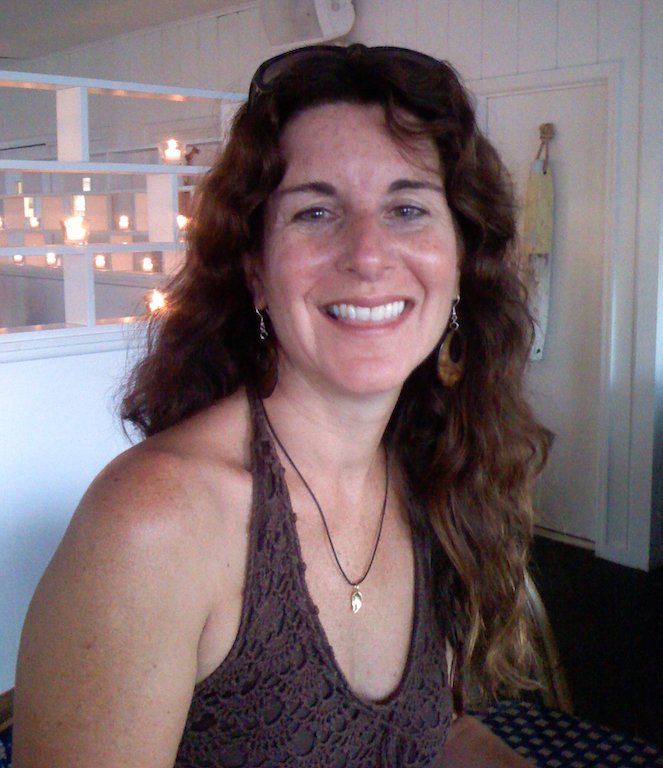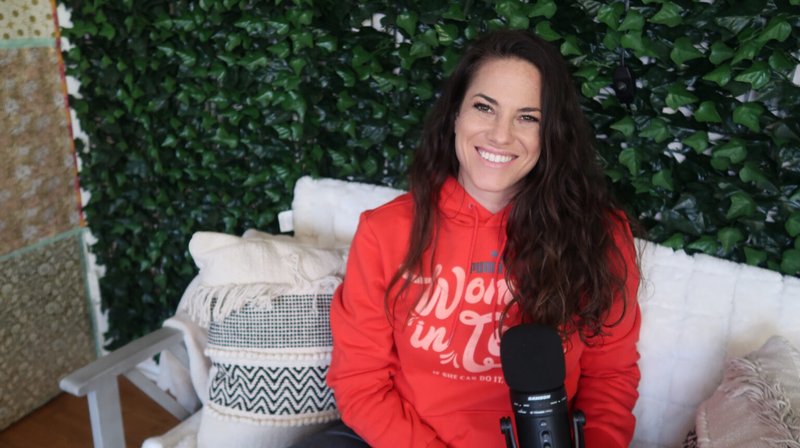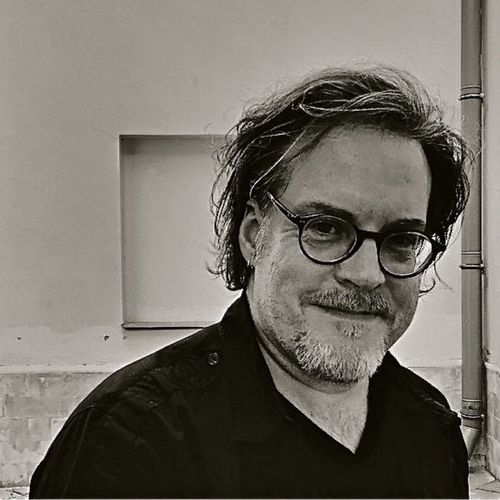Spotlight: Women in Podcasting – Kathleen Russo, Elsie Escobar & Espree Devora
As podcasting has become all the rage over the past decade, the field has evolved exponentially. This is true in terms of the countless number of podcasts now available and the vast range of subjects they cover, as well as the technology involved in producing them, the landscape of the podcasting business, and the diversity of those who create podcasts – particularly when it comes to women. According to an Edison Research statistic, listenership for podcasts has now increased to 49 percent women; moreover, some of the most influential voices in podcasting today are women.
We recently caught up with three leaders in the podcast game: Kathleen Russo, a veteran podcast producer (including “Here’s the Thing” with Alec Baldwin) who is also co-director of the Audio Podcast Fellows Program at New York’s Stony Brook University in Southampton; Elsie Escobar, inductee to the Academy of Podcasters Hall of Fame, co-founder of the podcasting community “She Podcasts” and producer of the official Libsyn podcast “The Feed”; and Espree Devora, who has been listed by Inc. magazine as one of the “Top 30 Women in Tech” and, aptly, produces/hosts the “Women in Tech” podcast.

Kathleen Russo
Kathleen runs the Audio Podcast Fellow’s podcast program at Stony Brook University, now in its fourth year. She was executive producer with former Vanity Fair/New Yorker editor Tina Brown of the podcast TBD (via Wondery), which was nominated as one of the best podcasts of 2019 by Cosmopolitan magazine. Along with producing Here’s the Thing with Alec Baldwin for iHeartRadio, Kathleen has embarked on a new podcast also through iHeart Radio called You and Me Both, hosted by Hillary Clinton. Kathleen has also contributed to The Moth, This American Life and StoryCorps, along with co-producing films with Steven Soderbergh (Gray’s Anatomy; And Everything Is Going Fine) and producing an Obie Award-winning play, Spalding Gray: Stories Left To Tell.
How have you seen the podcasting landscape shift since you’ve been in the field?
When I first started producing the podcast and radio show “Here’s the Thing” with Alec 10 years ago, there were only 100-some podcasts available. Now there are over 3 million! The biggest change I’ve seen since the pandemic is that we don’t have to rely on highly produced podcasts anymore. We can now record very easily at home – and the listener doesn’t mind, provided the content is good. I’m also really happy to see all the diversity of topics that are available for listening.
How has podcasting changed for women, in particular?
In terms of recent multimillion-dollar deals like that for the Call Her Daddy podcast, equal pay for sure. Plus, all the subject matter that has been covered for women about women and hosted by women – it’s a huge field for us right now, and the playing ground is equal in my opinion. Looking ahead, for everyone in podcasting, I think the biggest change in terms of the business is that podcasts are now being used to help launch bigger projects in TV, film, theater and books. It’s a big, open field now – and you can have larger projects grow from a podcast, since podcasts are so much cheaper to produce than a TV pilot. It’s an exciting place to start and see other projects born from the podcast.
What’s your technology toolkit like for podcasting?
I’m not technical or technology-minded, but Samson makes it very easy for people like me to make professional-quality recordings. I use Samson’s Q9U Dynamic Broadcast microphone. I just plug it into my computer and start recording. I really appreciate the ease of use.

Elsie Escobar
A podcaster for 15 years, Elsie was one of the first women to teach yoga via an indie podcast, with Elsie’s Yoga Class having been downloaded more than 4 million times to date. In 2007, her enthusiasm for podcasting led to her gig with Libsyn, the podcast host and distribution platform; through Libsyn, she has worked with hundreds of indie podcasters, sharing tools for better production and helping to educate podcasters about the field’s rapid evolution. She also produces and co-hosts The Feed, which is devoted to “keeping people podcasting.”
How would you say that podcasting has evolved over the past decade?
To me, the biggest change has been the vast diversification of who the “typical” podcaster is. Back in 2006, the majority of podcasters were male, white and in their mid- to late 30s, with a tech affinity or proficiency. In September 2014, iOS 8 was released, adding the Apple Podcasts app as a native app in the operating system. This was a catalyst for the biggest growth in podcasting up to that point. Then, in October 2014, the “Serial” podcast launched, and it was primed for success with a stellar team and the ability to reach previously untapped listeners with less friction – because of the newly easy access for consuming podcasts in iPhones, without having to download a special app. That was game-changing, a one-two punch that helped reach new listeners, people who hadn’t been previously exposed to podcasting. That, in turn, inspired more listeners to then be podcasters.
Over the past few years, more people over 50 have begun getting into podcasting – and entrepreneurs by droves. The comedy/monologue/interview genre of podcasting burgeoned, following the success of celebrity figures like Joe Rogan and Marc Maron. A lot of seminal podcasting communities were born five or six years ago, including Podcast Movement, She Podcasts and Entrepreneurs on Fire. Take the big indie podcast influencers, well-known legacy media personalities and breakout “podcast first” creators, then add the native Apple Podcasts app – and you have this wave of talent diversification in the medium. There has been an explosion of creative, thought-provoking content from often under-served voices, but the smart, wise, skilled, indomitable leaders have also pushed the medium forward in ways that, in my opinion, wouldn’t have happened without them.
My sense is that the communities that slowly nurtured new podcasters and the advent of social media (tools, tech and algorithms) together created exponential growth not only in the content in podcasts but also in the demographics of the field.
How have opportunities developed for women in podcasting?
There is no data on podcaster demographics, but it seems to me that women podcasters are nearing half of all creators. The community and organization that I co-created in 2014 currently has more than 20,000 members in the Facebook group. In 2017, we reached 7,000 members – but by June 2021, we had hit that 20,000 mark – 186 percent growth! The uniqueness of the She Podcasts Facebook group is that it’s for women and non-binary folks who have a podcast or are looking to start a podcast. Unlike other groups out there, we hold fast to serving those creating podcasts, rather than companies, organizations, service providers or even journalists. In 2018, Spotify launched its Sound Up Boot Camp, the aim of which is to bring more diverse voices into the podcast world, specifically women of color. The first call for applicants elicited 18,000 submissions for just 10 spots!
What has not changed very much is the media coverage of large mainstream organizations focusing on legacy media and celebrities. Also, the less-than-diverse demographic makeup of boards of directors and executives at the larger podcast industry companies and organizations… And how big billing and marquee features in the key podcasting apps and directories are still usually reserved for celebrities and well-known producers. But one thing that has really shifted – and it will only keep getting better – are the various newsletters and grassroots movements that help bring to the surface all those amazing indie podcast gems that exist. There are also exciting websites and apps that are making it easier for listeners to find content and connect with producers.
How do you see the business of podcasting in the coming years, looking ahead?
I love to speak to, advise and advocate for the independent voices in podcasting – and for podcast listeners. In the past, I found myself annoyed by all the big money and sway of the coastal media companies. But I was promptly reminded that all of this impacts the top 10 percent – it has nothing much to do with the other 90 percent. So, I’ll speak to “us.” Independent voices – which to me entails not only the hosting talent but also all the production and audio professionals, managers, consultants, advertising sales teams, etc. – will continue to create a vibrant infrastructure serving a market that will keep prospering. These professionals will “niche down” to serve very specific verticals within communities and varied industries, developing a solid economy among themselves.
The big time entertainment industry, radio and public media are working to re-imagine new ways of doing things, but power structures and cultures are hard to reinvent. I hope they succeed. But podcasting was born and grew from independent voices doing it their way, at home. There are many of us who are self-taught, Swiss Army Knife types with over a decade of experience in creating solid, skilled work, minus the red tape and power structures of existing broadcasting organizations. We’ll educate, mentor and support a new generation of creators who are makers of podcasts first. The evolving soul and spirit of podcasting remain as bright as ever.
What technology is important for you in podcasting?
I’ve been working with Samson gear for six years, and my advocacy for Samson products borders on obsession! One of my favorite microphones is the Samson Q2U – I have put that microphone through its paces. I’ve had to record in the most awkward, horrible audio circumstances. I’ve carried that mic across the country and recorded into digital recorders, my computer, iPhone and iPads. It has never let me down.
I know Samson has some fancier microphones, but that mic gave me my first hit of freedom to record however I wanted regardless of circumstances, and get fantastic sound quality to boot. I’ve never had the luxury of an ideal recording location or set-up, and investing in a more refined microphone simply didn’t fit with my lifestyle. The bonus of not having to be so precious with it – being able to beat it up and not be sad if it broke – was kind of life-changing. The majority of new podcasters just aren’t willing to invest in expensive high-end hardware. But, to me, the Samson Q2U is the gateway drug to microphone fixation, the first step in up-leveling audio, with minimal cost – and that helps new podcasters understand the power of hardware, giving them the confidence to invest in the future.

Espree Devora
Espree’s Women in Tech podcast is a forum for sharing inspirational stories from, as the title suggests, women in tech, with the goal being, she says, to elicit a feeling among listeners of “If she can do it, so can I.” She is also the creator of the WeAreLATech startups podcast, which aims to unify the Los Angeles tech eco system. She was the face of social audio app Clubhouse and writes for technology-news outlets covering startups.
What’s your view of the progression in podcasting?
In 2013, when I started my “WeAreLATech” podcast, many people still didn’t even know what a podcast was. Even I barely understood podcasting… In 2014, when Startup Podcast aired for the first time, Alex Blumberg struggled to get investors to believe his podcast network was worth investing in. Then, as the years went on, Google and other platforms started developing podcast listening apps. Before that, listening to a podcast was pretty much only easily accessible through an iPhone. Even Apple didn’t have its podcast app default on iPhones yet – you had to install it. That changed fast as podcasting grew and cars started integrating podcasting into their audio systems. Podcasting went from some obscure technology that only tech and audio nerds understood to every sort of person and company feeling like they had to have a podcast, just like with blogs and websites in years prior. With this expansion of podcasting culturally, so many stories are now being told from the point of view of all ethnicities, cultures and geographies – covering a large array of topics and creating that much more impact and unity globally.
What’s a tip that you would give a woman just getting started with a podcast?
I started production on my “Women in Tech” podcast in 2014, which was when the most valuable resource for women in podcasting was created – the Facebook group She Podcasts. It champions women in podcasting who are navigating their path to become sought-after content creators. All the technical and marketing support I need is there in the group, and I can ask as many questions as I need to. When I have a win, there’s also a whole community there to cheer me on. So, it’s a wonderful time to step into this “creator economy,” and it’s exciting to see more women around the world partake in curating impact through visual and audio media. An incredible tip for production job opportunities in the podcasting space is Pod People, founded by Rachael King. She sources job opportunities for the podcasting community, and it doesn’t cost us a thing.
How do you see podcasting evolving over the next decade — in terms of the business landscape, the tools, the reach?
It’s still a bit confusing trying to define what it means to be a podcaster. As an industry, we’re still undecided on our identity. Social audio is on the rise, so some think that’s podcasting. YouTube is a Goliath, and some create “video podcasts,” though I would call those video creators YouTubers. The others, like me, are more traditional audio-first creators, who spend a lot of time on podcast post-production and distribute our podcasts on the standard audio feeds like Apple, Spotify, Google Podcasts and Amazon Podcasts. Advertising on podcasts is sky-rocketing. Acquisitions of podcasts are shaking things up. Recently, the “Call Her Daddy” podcast got a deal with Spotify for $60 million, and the creator, Alexandra Cooper, only started her podcast in 2018 – while still broke, living in New York with a ton of roommates. Podcasting – and the money invested in it – will continue to grow. The new podcasting platform Racket just raised millions in investment money, for instance. Podcasting is an intimate medium, where listeners have a deep, meaningful relationship with podcast hosts – which in itself is absolutely powerful.
What are some of your tools for podcasting?
I use the Samson G-Track Pro microphone, which plugs directly into my computer via USB. I love it – it looks professional during my interviews, it’s so easy to use, and it gives me crystal-clear, high-quality audio. I can adjust the settings as I need to, depending on my recording needs. Plus, the team at Samson is awesome. As a podcaster, the products I use in my productions make a statement about what brands I believe in – and which are the best to use in consistently creating outstanding podcast episodes.
